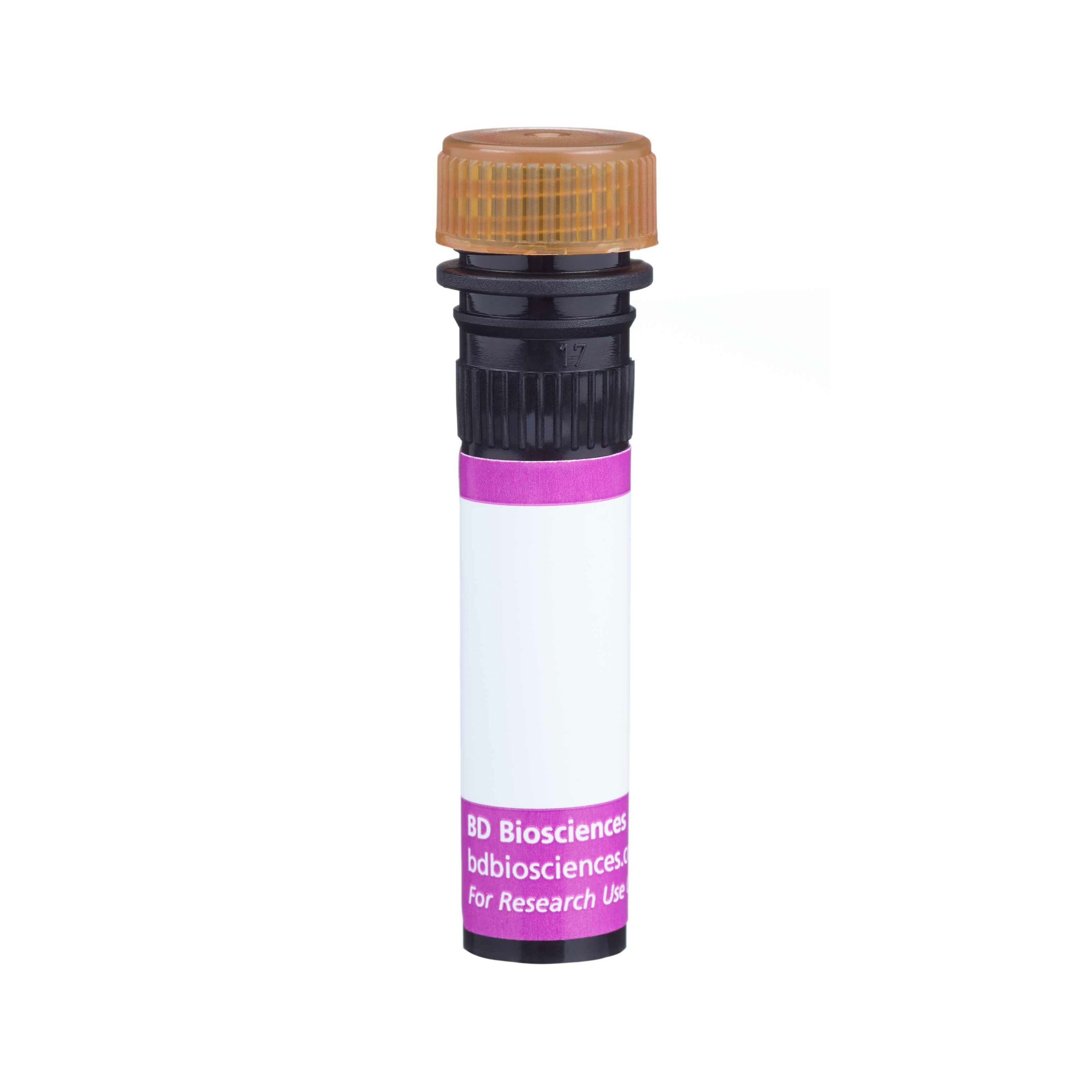Old Browser
This page has been recently translated and is available in French now.
Looks like you're visiting us from {countryName}.
Would you like to stay on the current country site or be switched to your country?


Regulatory Status Legend
Any use of products other than the permitted use without the express written authorization of Becton, Dickinson and Company is strictly prohibited.
Preparation And Storage
Recommended Assay Procedures
For optimal and reproducible results, BD Horizon Brilliant Stain Buffer should be used anytime two or more BD Horizon Brilliant dyes (including BD OptiBuild Brilliant reagents) are used in the same experiment. Fluorescent dye interactions may cause staining artifacts which may affect data interpretation. The BD Horizon Brilliant Stain Buffer was designed to minimize these interactions. More information can be found in the Technical Data Sheet of the BD Horizon Brilliant Stain Buffer (Cat. No. 563794).
Product Notices
- This antibody was developed for use in flow cytometry.
- The production process underwent stringent testing and validation to assure that it generates a high-quality conjugate with consistent performance and specific binding activity. However, verification testing has not been performed on all conjugate lots.
- Researchers should determine the optimal concentration of this reagent for their individual applications.
- An isotype control should be used at the same concentration as the antibody of interest.
- Caution: Sodium azide yields highly toxic hydrazoic acid under acidic conditions. Dilute azide compounds in running water before discarding to avoid accumulation of potentially explosive deposits in plumbing.
- For fluorochrome spectra and suitable instrument settings, please refer to our Multicolor Flow Cytometry web page at www.bdbiosciences.com/colors.
- Please refer to www.bdbiosciences.com/us/s/resources for technical protocols.
- BD Horizon Brilliant Stain Buffer is covered by one or more of the following US patents: 8,110,673; 8,158,444; 8,575,303; 8,354,239.
- BD Horizon Brilliant Violet 786 is covered by one or more of the following US patents: 8,110,673; 8,158,444; 8,227,187; 8,455,613; 8,575,303; 8,354,239.
- Cy is a trademark of GE Healthcare.
Companion Products






The 17A12 monoclonal antibody specifically binds to the IL-21 Receptor (IL-21R). The IL-21R, also known as CD360, is a 538 amino acid cytokine receptor with an extracellular domain consisting of one copy of the conserved WSXWS -containing cytokine-binding domain. The IL-21 receptor combines with the common cytokine-receptor γ-chain to form a functional receptor complex for IL-21. IL-21 is mainly produced by activated CD4+ T cells including T follicular helper (Tfh) cells. IL-21R is preferentially expressed by B cells, T cells, NK cells, some populations of myeloid cells, keratinocytes, and dendritic cells. Binding of its ligand, IL-21, in these cells results in the activation of the Jak/Stat signal transduction pathway. The effects IL-21 ligand binding has pleiotropic actions such as augmenting the proliferation of T cells, driving of B cells into memory cells, terminally differentiating plasma cells and augmenting the activity of natural killer cells. IL-21 receptor has anti-tumor activity and might have a role in the development of autoimmunity; it has been reported that the IL-21 receptor affects the homeostasis of regulatory T cells and it could enhance T cell-activated responses in human immune-inflammatory diseases.
The antibody was conjugated to BD Horizon™ BV786 which is part of the BD Horizon Brilliant™ Violet family of dyes. This dye is a tandem fluorochrome of BD Horizon BV421 with an Ex Max of 405-nm and an acceptor dye with an Em Max at 786-nm. BD Horizon BV786 can be excited by the violet laser and detected in a filter used to detect Cy™7-like dyes (eg, 780/60-nm filter).

Development References (9)
-
Asao H, Okuyama C, Kumaki S et al. Cutting edge: the common gamma-chain is an indispensable subunit of the IL-21 receptor complex. J Immunol. 2001; 167(1):1-5. (Biology). View Reference
-
Leonard WJ and Spolski R. Interleukin-21: A modulator of lymphoid proliferation, apoptosis and differentiation. Nat Rev Immunol. 2005; 5(9):688-698. (Biology). View Reference
-
Mizuguchi M, Asao H, Hara T, Higuchi M, Fujii M, Nakamura M. Transcriptional activation of the interleukin-21 gene and its receptor gene by human T-cell leukemia virus type 1 Tax in human T-cells. J Biol Chem. 2009; 284(38):25501-25511. (Clone-specific: Flow cytometry). View Reference
-
Nara H, Onoda T, Rahman M, et al. Regulation of interleukin-21 receptor expression and its signal transduction by WSB-2. Biochem Biophys Res Commun. 2010; 392(2):171-177. (Immunogen: Flow cytometry, Immunoprecipitation). View Reference
-
Parrish-Novak J, Dillon SR, Nelson A, et al. Interleukin 21 and its receptor are involved in NK cell expansion and regulation of lymphocyte function. Nature. 2000; 408(6808):57-63. (Biology). View Reference
-
Parrish-Novak J, Foster DC, Holly RD, Clegg CH. Interleukin-21 and the IL-21 receptor: novel effectors of NK and T cell responses. J Leukoc Biol. 2002; 72(5):856-863. (Biology). View Reference
-
Peluso I, Fantini MC, Fina D et al. IL-21 counteracts the regulatory T cell-mediated suppression of human CD4+ T lymphocytes. J Immunol. 2007; 178(2):732-739. (Biology). View Reference
-
Rahman M, Nara H, Onoda T et al. Cloning and characterization of an isoform of interleukin-21. FEBS Lett. 2007; 581(21):4001-4009. (Clone-specific: Flow cytometry). View Reference
-
Wu Z, Kim HP, Xue HH, Liu H, Zhao K, Leonard WJ. Interleukin-21 receptor gene induction in human T cells is mediated by T-cell receptor-induced Sp1 activity. Mol Cell Biol. 2005; 25(22):9741-9752. (Biology). View Reference
Please refer to Support Documents for Quality Certificates
Global - Refer to manufacturer's instructions for use and related User Manuals and Technical data sheets before using this products as described
Comparisons, where applicable, are made against older BD Technology, manual methods or are general performance claims. Comparisons are not made against non-BD technologies, unless otherwise noted.
For Research Use Only. Not for use in diagnostic or therapeutic procedures.
Report a Site Issue
This form is intended to help us improve our website experience. For other support, please visit our Contact Us page.